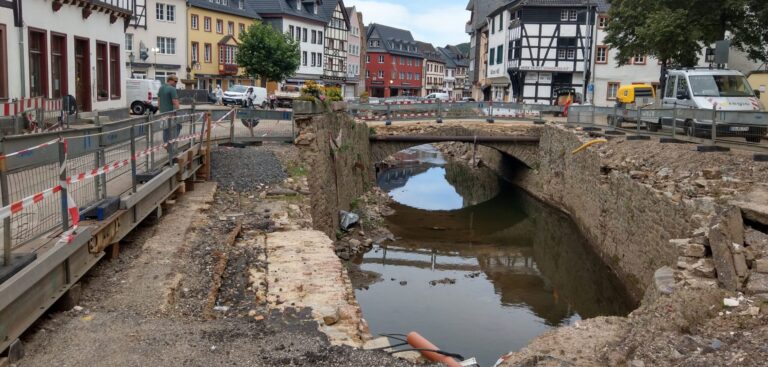Seismic sensors already in place to detect earthquakes could sense floods and act as an early warning system to minimize damage and save lives, according to new research.
Many floods in river valleys are monitored by river gauges, which can coarsely track a flood’s water level. However, gauges may be sparse, update infrequently and risk being washed away by a flood. Seismic stations are installed at a safe distance from streams and sense not only ground shaking due to earthquakes but also vibrations from explosions, landslides, storms and floods.
Previous research into seismic flood monitoring has been limited to detecting a flood and indirectly tracking its evolution, particularly for glacial floods. The new study goes one step further, using seismic signals to estimate flood velocity, water level and debris.
Michael Dietze, lead study author and a scientist at the University of Göttingen in Germany, said, “This study paves the way for real-time flood anatomy, with values that can be used by partners.”
The researchers focused on a 2021 flood in Germany that killed nearly 200 people. It used an existing earthquake seismometer station near the flood’s path as a flood detection and tracking tool. This seismic data was the only systematic source of quantitative information about how the flood evolved because three existing water-level stations along the main river were destroyed early on.
The team found that the seismometer illustrated the track of the flood for one hour as floodwaters plowed through the steep, winding Ahr valley, south of Cologne. By combining mathematical models, the researchers were able to estimate the speed at which the flood moved, extract information about the rising water level and estimate the amount of debris, such as gravel, cars and oil tanks, that was being swept away by the flood.
Measuring the ‘seismic footprint’ of a flood – its magnitude, velocity and trajectory – in real time could be used for future flood protection, providing information necessary to optimize models of flood behavior for warning and rescue initiatives.
“If the data stream from that station had been available and analyzed as our research now shows, essential real-time information on the magnitude and velocity of the flood would have been available,” said Dietze. “As 10% of Europe’s surface area is prone to rapid flooding by rivers confined in valleys, we may want to start thinking about new ways of flood early warning. The current network of water-level stations is not enough to be adequately prepared for future events.”
Dietze and his colleagues are currently working on a plan to identify further areas at risk of flooding and equip them with low-cost ‘watchtower’ seismometer pairs. Using two or more seismic sensors rather than a single sensor as in the study would provide scientists with more robust information, Dietze said. Installing such ‘watchtowers’ would cost a fraction of a percent of the damage caused by future floods, according to the researchers.
“The catastrophic flood that hit the Ahrtal in Germany in July 2021 revealed to residents, politicians, emergency services and scientists how much we need to learn to improve current flood warning systems,” Dietze said.
To view the study, published in the AGU journal Geophysical Research Letters, click here.



